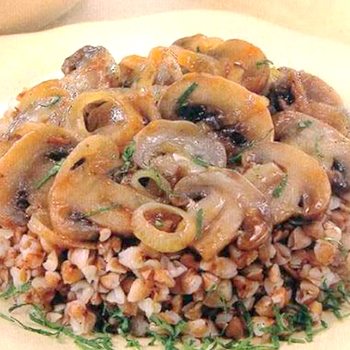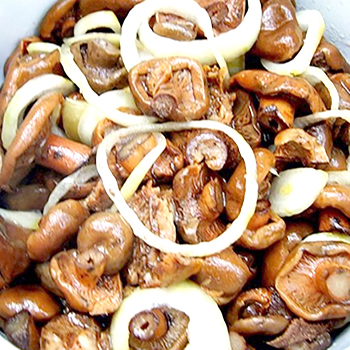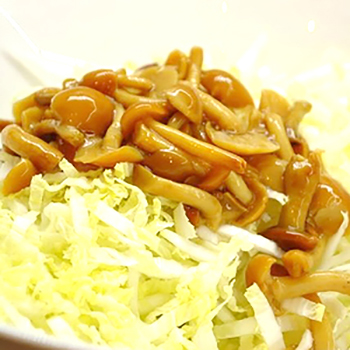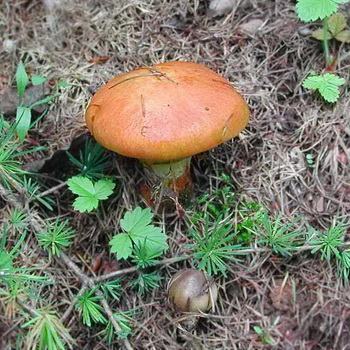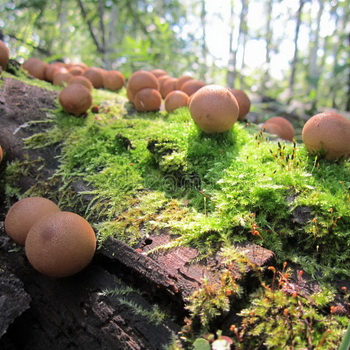Row tiger (leopard): photo and description of a poisonous mushroom, places of distribution and symptoms of poisoning
 Rows grow in large groups, forming long rows, for which they got their name. Mushrooms, depending on the species, can be edible, conditionally edible and poisonous. Most of the rows have an unpleasant mealy smell and a bitter taste. However, the tiger or leopard row, which will be discussed in this article, being considered a poisonous species, has a pleasant aroma and taste.
Rows grow in large groups, forming long rows, for which they got their name. Mushrooms, depending on the species, can be edible, conditionally edible and poisonous. Most of the rows have an unpleasant mealy smell and a bitter taste. However, the tiger or leopard row, which will be discussed in this article, being considered a poisonous species, has a pleasant aroma and taste.
Rowing tiger mushrooms are widespread throughout Russia in the temperate zone of the Northern Hemisphere. Fruiting usually begins at the end of the summer months and continues until the first frost begins. It is worth noting that mushroom pickers can easily confuse many edible types of rowing with tiger rowing, which is a rather toxic mushroom. Before collecting these mushrooms in their basket, lovers of "quiet hunting" must accurately distinguish the poisonous tiger rower, the photo of which is attached below, from its harmless relatives, so as not to accidentally end up in the hospital.
For a better memorization of the appearance and features of the tiger row, check out the photo and description of this fruit body.
Tiger row: photo and description of the mushroom
Latin name:Tricholoma pardinum.
Genus: Tricholoma.
Family: Ordinary.
Synonyms: the rowing is leopard, the rowing is poisonous.
Hat: diameter from 4 to 10 cm, sometimes up to 12 cm. In young specimens, the shape of the cap is spherical, becoming more convex with age, and in older specimens it is completely extended, with thin edges twisted downward, the entire surface of the cap cracks. The color scheme ranges from off-white to silvery bluish. The surface of the cap is dotted with flakes of scales that diverge in circles along it. A photo of a tiger or leopard row will help to more clearly represent the differences and similarities of the mushroom with other species.


Leg: height can vary from 3.5 to 10 or 12 cm, diameter from 2 to 4 cm, cylindrical, with some thickening at the root. The photo of the tiger row shows that young specimens of the fungus have a fibrous surface, which becomes almost smooth with age. The color ranges from reddish brown to light powdery, with light tones closer to the center.


Pulp: white with a grayish tint, gray under the skin, and yellow at the base of the mushroom. Has no bitterness, the color does not change when broken. The smell is almost always pleasant, less often deceptive flour.


Plates: frequent, teeth adhered to the pedicle, 0.8 to 1.2 mm wide. Young specimens have a whitish shade of the plates, sometimes they can be slightly yellowish. A photo of a tiger ryadovka mushroom clearly shows that the plates constantly emit watery drops.
Edibility: ryadovka tiger is a poisonous mushroom, even in small quantities its toxins cause intestinal disorders. Due to its pleasant aroma and taste, the mushroom is not associated with poisonous types of rowers. These features can induce the mushroom picker to put the fruit body in his basket, and then cook it. Signs of gastrointestinal poisoning appear at least 20 minutes later, maximum 2 hours after ingestion of the mushrooms. The following symptoms are observed: nausea, vomiting, diarrhea, profuse salivation, weakness, sharp abdominal pain, headache and fever. When the first signs appear, you need to urgently call an ambulance.
Similarities and differences: the poisonous tiger ryadovka is very similar to the edible gray ryadovka in appearance. However, the main difference is the presence of scales on the cap of a poisonous mushroom.
The edible earthy-gray ryadovka is also similar to the tiger ryadovka. However, she has a brittle hat with a diameter of up to 7 cm, gray in color.The leg is almost white and does not have a skirt-ring.
Spreading: ryadovki leopard or tiger grow in the temperate climatic zone of Russia. Usually they prefer to grow in small colonies, forming "witch rings", less often they are found singly. Fruit bodies form a symbiosis with conifers, sometimes found in mixed and deciduous forests on sandy soils covered with moss. It prefers pines, spruces, less often beech, oak and linden. Begins fruiting in August and ends in mid-October. Under favorable weather conditions, growth can last until late October or early November. The tiger row can often be found in parks, gardens, fields and meadows.


Fans of "quiet hunting" should definitely use the description and photos of tiger row mushrooms, which clearly show their fruiting in natural conditions, as well as the peculiarities of their appearance. Having in your arsenal the necessary information, you will be able to correctly distinguish edible representatives from poisonous ones. However, never forget the main thing: if you are not sure about the found fruit body, leave the idea of taking it into the basket!

